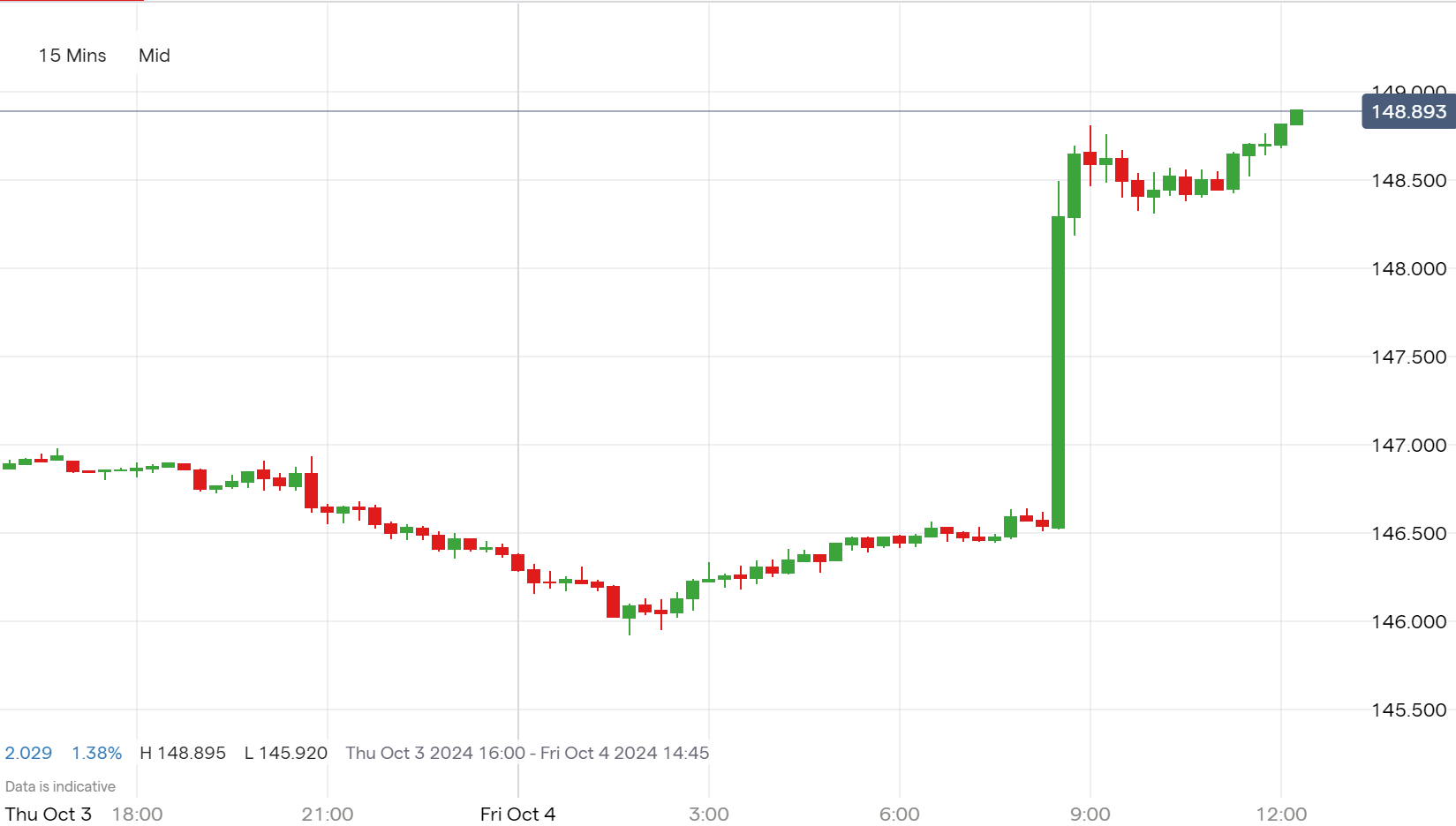US job market surges: positive outlook spurs USD and market gains amid potential Fed policy shifts
September's job gains boost USD and stocks; explore how forex markets respond and what it means for traders. Stay informed on potential shifts in monetary policy that may impact your trading strategy.

Key Points
- The US economy added 254,000 jobs in September, exceeding forecasts of 140,000
- Unemployment rate fell to 4.1%, below the expected 4.2%
- US dollar index climbed over 0.5% to reach 102.5
- S&P 500 rose 0.7%, Dow Jones increased by 245 points, Nasdaq gained 1.1%
- USD/CAD and USD/JPY saw sharp increases, reaching 1.3578 and 148.888
Nonfarm Payrolls and Unemployment Rate Data Exceed Analysts’ Expectations
According to this morning’s Nonfarm Payrolls (NFP) data release, the US economy added 254,000 jobs this September—a figure significantly above the forecasted 140,000 jobs. This marks the strongest job growth in the last six months and surpasses this year’s average monthly job gain of 203,000. Furthermore, the US unemployment rate has decreased to 4.1% this September, its lowest rate in three months and below market expectations of 4.2%.
US Dollar Index and Stock Market on an Optimistic Climb
After this promising NFP data release, the US dollar index has increased over 0.5% to over 102.5—reaching its highest level since mid-August, contributing to nearly 2% total gains just this week. Additionally, major US stocks are up today, with the S&P 500 gaining 0.7%, the Dow Jones climbing 245 points, and the Nasdaq rising 1.1%. These movements show how interconnected financial markets can be; changes in employment data can boost investor confidence, affecting both currency and equity valuations.
US Dollar Strong Against Major Pairs
This morning marks another good day for the dollar in the forex market, as it has remained strong in most USD pairs. Both USD/CAD and USD/JPY made significant increases this morning, reaching 1.3578 and 148.888, respectively. These sharp increases illustrate the dollar's current strength compared to other currencies, influenced by positive economic news.
USD/JPY price history

USD/CAD price history

What’s Next for USD?
The stronger-than-expected Nonfarm Payrolls and low unemployment rate may influence the Federal Reserve's monetary policy, should this optimistic trend continue. A robust labor market often leads to considerations of interest rate hikes; this can bolster the USD due to higher expected returns on USD-denominated assets. The rise in the US dollar index and gains in major US stock indices suggest investor confidence in the US economy. This momentum could sustain the USD’s strength, especially if economic data keeps exceeding expectations. However, market volatility and shifts in global economic conditions remain factors to consider; traders should remain cautious and closely monitor economic indicators.
How to trade US dollar
- Open an account to get started, or practice on a demo account
- Choose your forex trading platform
- Open, monitor, and close positions on USD pairs
Trading forex requires an account with a forex provider like tastyfx. Many traders also watch major forex pairs like EUR/USD and USD/JPY for potential opportunities based on economic events such as inflation releases or interest rate decisions. Economic events can produce more volatility for forex pairs, which can mean greater potential profits and losses as risks can increase at these times.
You can help develop your forex trading strategies using resources like tastyfx’s YouTube channel. Our curated playlists can help you stay up to date on current markets and understand key terms. Once your strategy is developed, you can follow the above steps to open an account and get started trading forex.
Your profit or loss is calculated according to your full position size. Leverage will magnify both your profits and losses. It’s important to manage your risks carefully as losses can exceed your deposit. Ensure you understand the risks and benefits associated with trading leveraged products before you start trading with them. Trade using money you’re comfortable losing.
